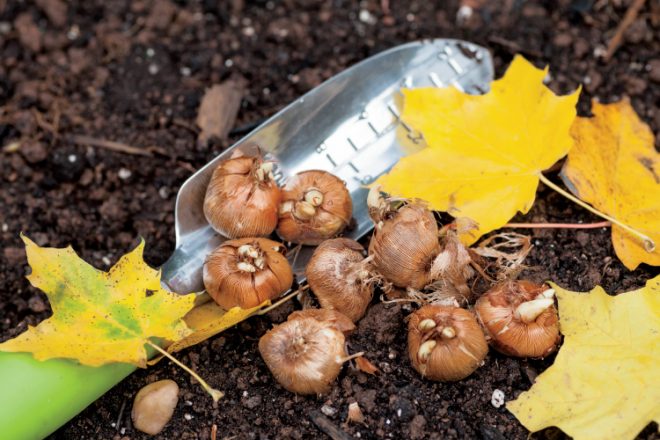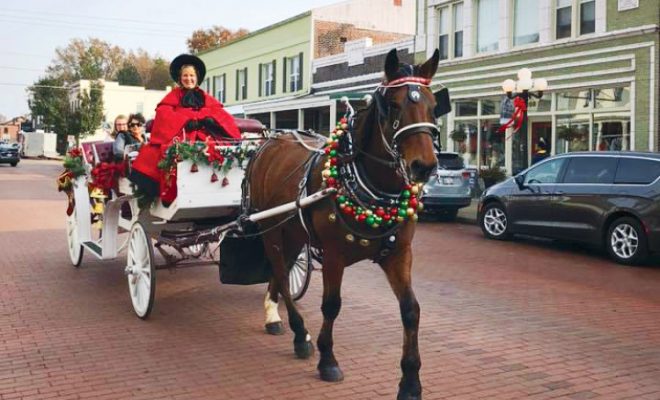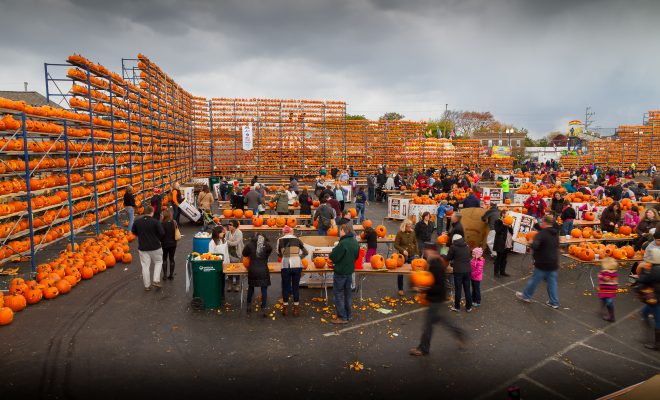
Every spring, enjoying the riot of early color, homeowners vow to plant more tulips and daffodils next fall. However, you could also have been enjoying summer bulbs throughout the warm months.
Hardy, spring flowering and Dutch refer to bulbs planted in fall that emerge and bloom in spring. They include the big ones, such as daffodils, tulips and hyacinths, but also some great small flowers, such as crocus, grape hyacinth and snowdrops. All require a cooling period in the ground during winter. Spring arrives, and up they pop, except for snowdrops, which usually bloom quite happily in February.
Having hardy bulbs return year after year requires a few tricks. Plant them in mid-October through the end of November. Use the biggest bulb available for the species you want to plant. Plant deep enough, measuring from the top of the bulb, not the bottom of the hole. Choose a spot in full sun that doesn’t get much supplemental water during the summer. Finally, allow the foliage to completely turn yellow before removing it. Those green leaves act as a factory, taking energy from the sun to produce carbohydrates that rebuild the bulb for next year.
Re-blooming in successive years also depends on the species you choose to grow. Daffodils return year after year because the same bulb continues to live if it receives enough energy each spring. Tulips divide every year with the bulb splitting in two, producing two small bulbs where there once was one large bulb. Species tulips, small botanical varieties, return more reliably than the large hybrids.
I often get asked what to do with bulbs that gardeners forgot to plant in the fall. You have to store them somewhere, so you might as well store them in the ground. They may not bloom the first year, but hopefully they will get on schedule after that.
That brings us to the tender, summer bulbs – those planted in spring, dug up in fall and stored inside over winter. Gladiolus, canna, dahlia, caladium, zephyr lily and tuberous begonia comprise just a few of the great summer bulbs. Technically, tubers, rhizomes or corms encompass plants with underground storage systems, but lumping them under the bulb heading has long been accepted.
Follow the planting depth directions on the package, waiting until the soil is nicely warm, about the time you plant tomatoes. Enjoy all summer, and then dig them up in the fall. Pack the bulbs loosely in sawdust, dry peat moss or vermiculite. They shouldn’t touch their neighbor and should be packed no more than three rows deep. Use a breathable container such as cardboard. No plastic, please. Next find a cool, dry, dark place. Basements or attached garages that never freeze work well.
For an easier approach, try growing summer bulbs in containers. Allow the soil to dry, cut off any foliage, cover with something to keep out the light and set the container in its winter storage spot. Done.
This fall, plant some bulbs for enjoyment in the spring.
Ask the Expert
Q: I’ve had good luck growing Knock Out™ roses. Now I’m ready to try something a little harder. Any suggestions?
A: I like Rosa ‘New Dawn,’ a climbing rose covered in light pink blooms with a lovely scent. You will need to tie it to its support and grow in full sun for the best flower display.
Q: Does partial shade mean dappled shade or shade for part of the day?
A: Partial shade refers to four to six hours of direct sunlight each day. The rest of the time can be full shade or dappled shade.
Jan Phipps is a University of Illinois Extension Master Gardener. She farms, gardens, writes and podcasts near Chrisman.




